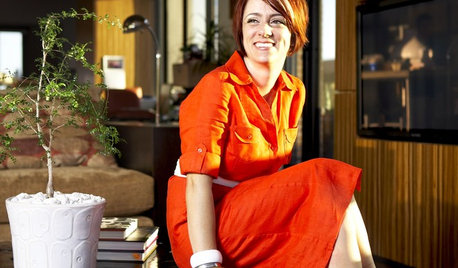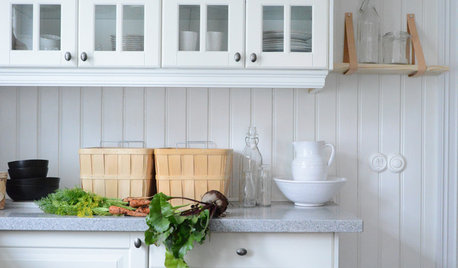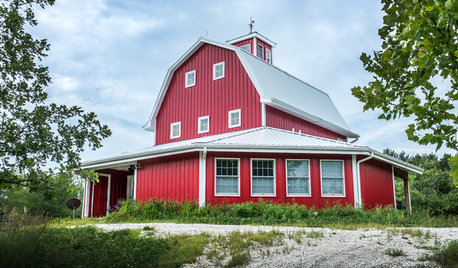regular geothermal vs. direct geothermal
girlsmom4
19 years ago
Related Stories

DECORATING GUIDESDesigner Sketch: Danielle Wallinger
Starting in an unexpected place, this interior designer talks about geothermal systems, inspiration sources and the most joyous color
Full Story
GREEN BUILDINGHouzz Tour: See a Maine House With a $240 Annual Energy Bill
Airtight and powered by the sun, this energy-efficient home in a cold-winter climate is an architectural feat
Full Story
HOMES AROUND THE WORLDHouzz Tour: Retired Soldier Creates Her Dream Home in Sweden
A Swedish family's fantasy of a rural retreat becomes a reality after years of renovations
Full Story
MOST POPULAR5 Ways to Hide That Big Air Conditioner in Your Yard
Don’t sweat that boxy A/C unit. Here’s how to place it out of sight and out of mind
Full Story
GREAT HOME PROJECTSHow to Add a Radiant Heat System
Enjoy comfy, consistent temperatures and maybe even energy savings with hydronic heating and cooling
Full Story
GREEN BUILDINGHouzz Tour: Going Completely Off the Grid in Nova Scotia
Powered by sunshine and built with salvaged materials, this Canadian home is an experiment for green building practices
Full Story
DECORATING GUIDES10 Ways to Hide That Air Conditioner
Feeling boxed in designing around your mini-split air conditioner? Try one of these clever disguises and distractions
Full Story
BARN HOMESHouzz Tour: An Energy-Efficient Barn Graces the Nebraska Landscape
Passive-house technologies and a rain-harvesting and greywater system conserve natural resources in this weekend country home
Full Story
HEALTHY HOMEGet Cleaner Indoor Air Without Opening a Window
Mechanical ventilation can actually be better for your home than the natural kind. Find out the whys and hows here
Full Story
FLOORSIs Radiant Heating or Cooling Right for You?
Questions to ask before you go for one of these temperature systems in your floors or walls (yes, walls)
Full StorySponsored
Leading Interior Designers in Columbus, Ohio & Ponte Vedra, Florida






BBTM
knoto55
Related Professionals
Hayward Solar Energy Systems · Palm Springs Solar Energy Systems · Selma Solar Energy Systems · Oak Grove Design-Build Firms · Oak Hills Design-Build Firms · Accokeek Home Builders · Dinuba Home Builders · Fargo Home Builders · Rossmoor Home Builders · South Sioux City Home Builders · Tampa Roofing & Gutters · Golden Valley Roofing & Gutters · Minnetonka Roofing & Gutters · Orlando Roofing & Gutters · White Plains Roofing & GuttersTracieK
java_man
lazypup
dragonfly_
lazypup
wallers164
fsq4cw
organic_benjamin
avmg
lakeshorebuilder
DavidR
fsq4cw
lakeshorebuilder
lakeshorebuilder
chazas
lakeshorebuilder
fsq4cw
lakeshorebuilder
fsq4cw
honeysmomcooks
fsq4cw
davidqxo
fsq4cw
solargary
fsq4cw
solargary
DavidR
jonzeeff_yahoo_com
jzeeff
lovelydays
fsq4cw
solargary
sunnyflies
Marc Well